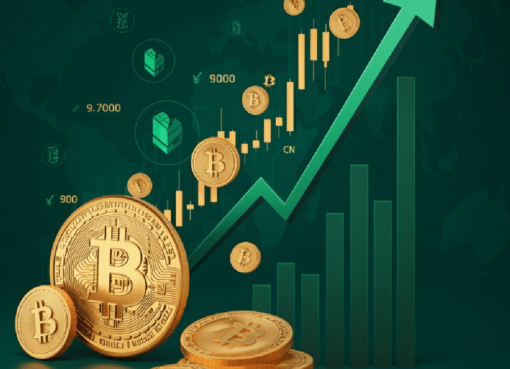Gold’s history as a symbol of value dwarfs that of any other artifact. Used as money in both ancient Greece and the Roman empire, gold was also the preferred method of payment for goods along the Silk Road. When modern banking emerged during the Italian Renaissance, the concept of paper money convertible into gold was invented. This practice ended a half-century ago, but the value of gold remains timeless.
Starting with England in 1717, modern nations began anchoring their national systems of money to gold in what became known as the “gold standard.” By the late 1800s, and until World War I, the most advanced economies were united in this approach. Today, although the money of nations is no longer anchored to it in any way, gold has retained considerable economic utility. Whether used to preserve savings or as a hedge against financial instability, gold has been a mainstay in individual, institutional and state portfolios.
Gold ownership is challenging
In spite of this storied history and the clear economic utility of a scarce asset, gold ownership remains challenging. Unlike fiat money in bank accounts or financial assets in investment accounts, stores of gold must be physically safeguarded against theft. As these volumes of stored gold increase, incentives for theft also rise, pushing the cost of secure custody higher. Another challenge is transportability. Theft must also be physically guarded against during transit, but eliminating this risk can be prohibitively expensive. Not everyone can afford an armored Brinks truck.
More challenges arise at the transactional level where the gold must be both verified for its authenticity and denominated in such quantities as to suit both the buyer and seller. Due to the high costs of purity testing and the difficulties of dividing physical gold, these constraints dramatically lower the potential for voluntary transactions between buyers and sellers. The potential for lower-value transactions suffers the most, as these buyers and sellers typically cannot rely on economies of scale to offset transaction costs. They may also prefer to use smaller and more precise denominations than the antiquated “gold bar.”
Together, these challenges create significant friction for both buyers and sellers of physical gold. These hurdles can be especially discouraging for smaller investors who may be dissuaded from ownership of the physical asset altogether. Popular gold-based financial products such as Exchange-Traded Funds, or ETFs, might then be used to gain some exposure, but this is not an economic equivalent to physical gold ownership.
What is the purpose of gold ownership?
Despite the challenges associated with physical ownership, gold markets continue to be among the most liquid in the world. Much like the geological deposits of this shiny metal, the demand for physical gold ownership is widely dispersed around the globe. The desirability of gold jewelry is universal, but so is the need to protect oneself from currency debasement and other financial turbulence. In countries where currencies are known to depreciate rapidly, it is far more common for citizens to hold their savings in physical gold rather than as money in a bank account.
Just weeks ago, amid the COVID-19 crisis, long lines could be seen forming outside of Bangkok gold shops as residents queued to sell their gold.
Because of work stoppages brought on by the health crisis, many Thai nationals sought to convert some of their savings into much-needed cash. The eight-year high Thai baht price of gold made this an especially attractive option and highlights the ultimate purpose of owning gold: exposure to the spot price of physical gold in terms of one’s own fiat currency. Whether it is a Thai shopkeeper protecting their savings, or a global hedge fund executing a complex investment strategy, the economic purpose of owning physical gold is the same: exposure.
Fulfilling the purpose while overcoming the challenges
The days of waiting in line to buy or sell gold may soon be over. While Bitcoin (BTC) has been heralded as “digital gold,” related innovations in blockchain technology are quietly shifting the paradigm of physical gold ownership. By leveraging this new technology, Tether Gold (XAUT) and other gold-backed stablecoins are fulfilling the economic purpose of physical gold ownership while overcoming many of the traditionally associated challenges. With a quickly growing market cap of approximately $86 million, XAUT has eclipsed PAX Gold (PAXG) to become the most widely held and circulated gold-backed stablecoin.
By embedding legal title to specific allocations of authenticated physical gold into a digital token, this highly innovative class of products combines the best of three distinct worlds:
(1) Direct exposure to the price of physical gold.
(2) The cost-efficiency and accessibility of traditional financial assets, such as ETFs.
(3) The transactional utility of a digital token.
Before gold-backed stablecoins, only the largest investors could avoid making stark trade-offs between (1) and (2) above. Everyone wants direct exposure to the price of physical gold, but at what cost? From the burden of securing physical storage and transportation to the added friction of purity-testing and low divisibility, it is easy to see how direct exposure has become prohibitively expensive for most investors. Unable to harness economies of scale, these investors are then priced out of physical ownership and priced into a synthetic proxy.
But margarine is not butter. Without traceable allocation to specific, authenticated and securely vaulted physical gold, these synthetic gold-based financial products can never amount to the real thing, no matter how popular they become. Today, through technical innovation and legal design, gold-backed stablecoins have been working to harness economies of scale for everyone. Now, for the first time in gold’s long history, investors can gain direct exposure to the price of physical gold without having to overcome the traditional associated costs and challenges. Physical ownership has been democratized.
The market impact of democratizing physical gold ownership
The benefits of gold-backed stablecoins extend well beyond the gains for individual buyers and sellers. The market as a whole is affected. John Bogle’s 1975 launch of the first index fund offered a similar value proposition to investors: democratization of diversified equity market exposure. Recognizing that the performance of actively-managed mutual funds could not justify their high fees, Bogle set out to offer low-cost, passive investment products by replicating the market at scale. These products’ popularity exploded in the ensuing decades, as individual investors began to recognize how much money Bogle’s invention could save them.
Despite these clear gains for individual investors, the long term impact of index funds on global equity markets has been ambiguous at best, and likely destructive. With passive investing strategies having grown to represent an ever-greater share of market activity, the proliferation of these index products has raised fundamental concerns over liquidity and price discovery within equities markets. Bogle himself recognized this problem later in his career, as he worried that the explosion of passive investing had opened the door to manipulation from speculators. Having designed index funds for long-term investors, Bogle remained dismayed into his final days by the speculative turn that the now-massive ETF industry had taken. Warren Buffet has described Bogle as the man “who has done the most for American investors,” but the jury is still out on what passive investing has done to American equity markets, something Bogel himself recognized.
Gold-backed stablecoins have flipped this story on its head. Cost-efficient ownership of physical gold has certainly been democratized but in a way that supports the long-term liquidity and price discovery within global gold markets. Whereas the growth of passive investment flows, as recognized by Bogle, would increase the susceptibility of equity markets to manipulation, the growth of gold-backed stablecoins would have the opposite effect. Since today’s gold markets are already dominated by “paper” — financial instruments with no direct connection to specific allocations of physical gold — the functioning and integrity of these markets can only improve as gold-backed stablecoins gain prominence.
With myriad advantages from both the individual and collective standpoints, gold-backed stablecoins really do allow the investing world to have its cake and eat it too.
The views, thoughts and opinions expressed here are the author’s alone and do not necessarily reflect or represent the views and opinions of Cryptox.
This article does not contain investment advice or recommendations. Every investment and trading move involves risk, you should conduct your own research when making a decision.
Matthew Alexander is the compliance analyst at Tether, a token backed by actual assets, including the U.S. dollar, the euro and gold. Being anchored or “tethered” to real-world currency, Tether provides protection from the volatility of cryptocurrencies.




